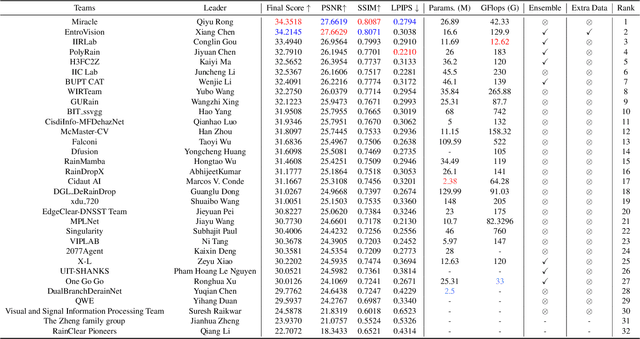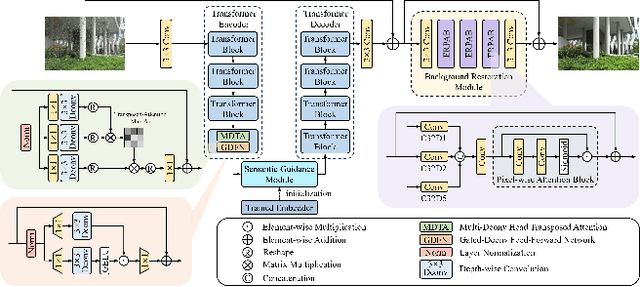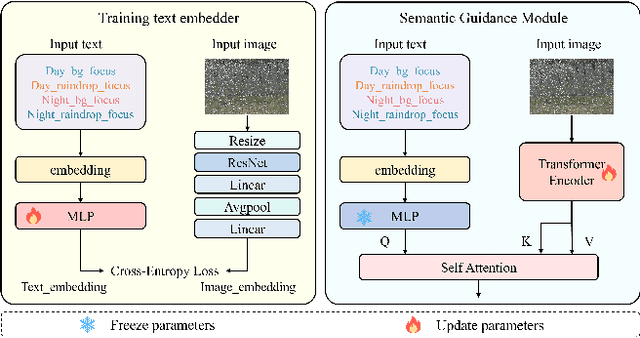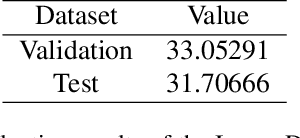Zhuoxuan Li
GTR-Mamba: Geometry-to-Tangent Routing for Hyperbolic POI Recommendation
Oct 27, 2025Abstract:Next Point-of-Interest (POI) recommendation is a critical task in modern Location-Based Social Networks (LBSNs), aiming to model the complex decision-making process of human mobility to provide personalized recommendations for a user's next check-in location. Existing POI recommendation models, predominantly based on Graph Neural Networks and sequential models, have been extensively studied. However, these models face a fundamental limitation: they struggle to simultaneously capture the inherent hierarchical structure of spatial choices and the dynamics and irregular shifts of user-specific temporal contexts. To overcome this limitation, we propose GTR-Mamba, a novel framework for cross-manifold conditioning and routing. GTR-Mamba leverages the distinct advantages of different mathematical spaces for different tasks: it models the static, tree-like preference hierarchies in hyperbolic geometry, while routing the dynamic sequence updates to a novel Mamba layer in the computationally stable and efficient Euclidean tangent space. This process is coordinated by a cross-manifold channel that fuses spatio-temporal information to explicitly steer the State Space Model (SSM), enabling flexible adaptation to contextual changes. Extensive experiments on three real-world datasets demonstrate that GTR-Mamba consistently outperforms state-of-the-art baseline models in next POI recommendation.
NTIRE 2025 Challenge on Day and Night Raindrop Removal for Dual-Focused Images: Methods and Results
Apr 19, 2025



Abstract:This paper reviews the NTIRE 2025 Challenge on Day and Night Raindrop Removal for Dual-Focused Images. This challenge received a wide range of impressive solutions, which are developed and evaluated using our collected real-world Raindrop Clarity dataset. Unlike existing deraining datasets, our Raindrop Clarity dataset is more diverse and challenging in degradation types and contents, which includes day raindrop-focused, day background-focused, night raindrop-focused, and night background-focused degradations. This dataset is divided into three subsets for competition: 14,139 images for training, 240 images for validation, and 731 images for testing. The primary objective of this challenge is to establish a new and powerful benchmark for the task of removing raindrops under varying lighting and focus conditions. There are a total of 361 participants in the competition, and 32 teams submitting valid solutions and fact sheets for the final testing phase. These submissions achieved state-of-the-art (SOTA) performance on the Raindrop Clarity dataset. The project can be found at https://lixinustc.github.io/CVPR-NTIRE2025-RainDrop-Competition.github.io/.
Reciprocal Point Learning Network with Large Electromagnetic Kernel for SAR Open-Set Recognition
Nov 07, 2024



Abstract:The limitations of existing Synthetic Aperture Radar (SAR) Automatic Target Recognition (ATR) methods lie in their confinement by the closed-environment assumption, hindering their effective and robust handling of unknown target categories in open environments. Open Set Recognition (OSR), a pivotal facet for algorithmic practicality, intends to categorize known classes while denoting unknown ones as "unknown." The chief challenge in OSR involves concurrently mitigating risks associated with generalizing features from a restricted set of known classes to numerous unknown samples and the open space exposure to potential unknown data. To enhance open-set SAR classification, a method called scattering kernel with reciprocal learning network is proposed. Initially, a feature learning framework is constructed based on reciprocal point learning (RPL), establishing a bounded space for potential unknown classes. This approach indirectly introduces unknown information into a learner confined to known classes, thereby acquiring more concise and discriminative representations. Subsequently, considering the variability in the imaging of targets at different angles and the discreteness of components in SAR images, a proposal is made to design convolutional kernels based on large-sized attribute scattering center models. This enhances the ability to extract intrinsic non-linear features and specific scattering characteristics in SAR images, thereby improving the discriminative features of the model and mitigating the impact of imaging variations on classification performance. Experiments on the MSTAR datasets substantiate the superior performance of the proposed approach called ASC-RPL over mainstream methods.
OSAD: Open-Set Aircraft Detection in SAR Images
Nov 03, 2024



Abstract:Current mainstream SAR image object detection methods still lack robustness when dealing with unknown objects in open environments. Open-set detection aims to enable detectors trained on a closed set to detect all known objects and identify unknown objects in open-set environments. The key challenges are how to improve the generalization to potential unknown objects and reduce the empirical classification risk of known categories under strong supervision. To address these challenges, a novel open-set aircraft detector for SAR images is proposed, named Open-Set Aircraft Detection (OSAD), which is equipped with three dedicated components: global context modeling (GCM), location quality-driven pseudo labeling generation (LPG), and prototype contrastive learning (PCL). GCM effectively enhances the network's representation of objects by attention maps which is formed through the capture of long sequential positional relationships. LPG leverages clues about object positions and shapes to optimize localization quality, avoiding overfitting to known category information and enhancing generalization to potential unknown objects. PCL employs prototype-based contrastive encoding loss to promote instance-level intra-class compactness and inter-class variance, aiming to minimize the overlap between known and unknown distributions and reduce the empirical classification risk of known categories. Extensive experiments have demonstrated that the proposed method can effectively detect unknown objects and exhibit competitive performance without compromising closed-set performance. The highest absolute gain which ranges from 0 to 18.36% can be achieved on the average precision of unknown objects.
EMWaveNet: Physically Explainable Neural Network Based on Microwave Propagation for SAR Target Recognition
Oct 13, 2024



Abstract:Deep learning technologies have achieved significant performance improvements in the field of synthetic aperture radar (SAR) image target recognition over traditional methods. However, the inherent "black box" property of deep learning models leads to a lack of transparency in decision-making processes, making them difficult to be convincingly applied in practice. This is especially true in SAR applications, where the credibility and reliability of model predictions are crucial. The complexity and insufficient explainability of deep networks have become a bottleneck for their application. To tackle this issue, this study proposes a physically explainable framework for complex-valued SAR image recognition, designed based on the physical process of microwave propagation. This framework utilizes complex-valued SAR data to explore the amplitude and phase information and its intrinsic physical properties. The network architecture is fully parameterized, with all learnable parameters endowed with clear physical meanings, and the computational process is completed entirely in the frequency domain. Experiments on both the complex-valued MSTAR dataset and a self-built Qilu-1 complex-valued dataset were conducted to validate the effectiveness of framework. In conditions of target overlap, our model discerns categories others find challenging. Against 0dB forest background noise, it boasts a 20% accuracy improvement over traditional neural networks. When targets are 60% masked by noise, it still outperforms other models by 9%. An end-to-end complex-valued synthetic aperture radar automatic target recognition (SAR-ATR) system has also been constructed to perform recognition tasks in interference SAR scenarios. The results demonstrate that the proposed method possesses a strong physical decision logic, high physical explainability and robustness, as well as excellent dealiasing capabilities.
A data-driven rutting depth short-time prediction model with metaheuristic optimization for asphalt pavements based on RIOHTrack
May 11, 2023



Abstract:Rutting of asphalt pavements is a crucial design criterion in various pavement design guides. A good road transportation base can provide security for the transportation of oil and gas in road transportation. This study attempts to develop a robust artificial intelligence model to estimate different asphalt pavements' rutting depth clips, temperature, and load axes as primary characteristics. The experiment data were obtained from 19 asphalt pavements with different crude oil sources on a 2.038 km long full-scale field accelerated pavement test track (RIOHTrack, Road Track Institute) in Tongzhou, Beijing. In addition, this paper also proposes to build complex networks with different pavement rutting depths through complex network methods and the Louvain algorithm for community detection. The most critical structural elements can be selected from different asphalt pavement rutting data, and similar structural elements can be found. An extreme learning machine algorithm with residual correction (RELM) is designed and optimized using an independent adaptive particle swarm algorithm. The experimental results of the proposed method are compared with several classical machine learning algorithms, with predictions of Average Root Mean Squared Error, Average Mean Absolute Error, and Average Mean Absolute Percentage Error for 19 asphalt pavements reaching 1.742, 1.363, and 1.94\% respectively. The experiments demonstrate that the RELM algorithm has an advantage over classical machine learning methods in dealing with non-linear problems in road engineering. Notably, the method ensures the adaptation of the simulated environment to different levels of abstraction through the cognitive analysis of the production environment parameters.
 Add to Chrome
Add to Chrome Add to Firefox
Add to Firefox Add to Edge
Add to Edge